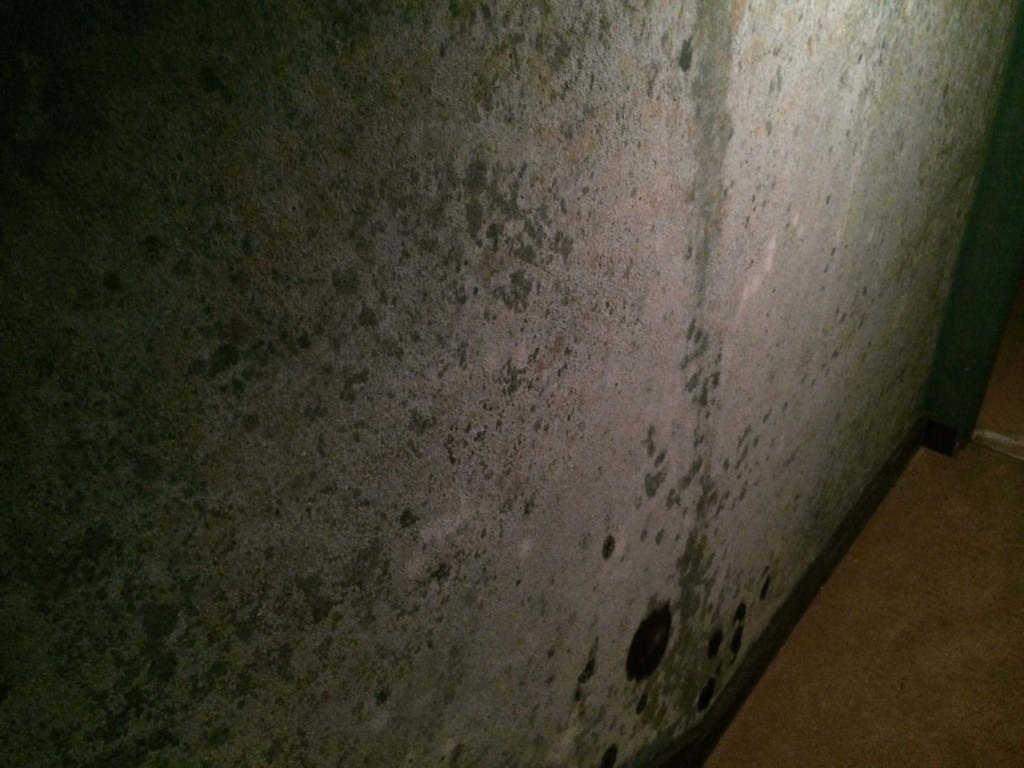 Molds are naturally occurring fungi found almost everywhere in our environment. Molds reproduce by forming millions of microscopic spores that cannot be seen by the human eye and can exist in the harshest of conditions, both indoors and outdoors, at any time of the year. In the presence of moisture, oxygen, and an organic food source, mold can grow rapidly and begin to deteriorate the surface on which it lies. Cellulose materials in particular, including paper, wood, and many building materials, provide an excellent food source for mold spores and are common surfaces for mold growth.
Molds are naturally occurring fungi found almost everywhere in our environment. Molds reproduce by forming millions of microscopic spores that cannot be seen by the human eye and can exist in the harshest of conditions, both indoors and outdoors, at any time of the year. In the presence of moisture, oxygen, and an organic food source, mold can grow rapidly and begin to deteriorate the surface on which it lies. Cellulose materials in particular, including paper, wood, and many building materials, provide an excellent food source for mold spores and are common surfaces for mold growth.
Should I be Concerned?
All molds have the potential to cause adverse health effects, and while not all individuals are affected, molds of all types have been known to cause allergic reactions, respiratory problems, and for some, infection in the lungs. Those at greatest risk for adverse health effects are those with weakened immune systems and pre-existing respiratory conditions. In addition to a variety of health risks, mold will gradually deteriorate any surface on which it grows, potentially causing structural damage to a home or building.
How Do I Know If I Have Mold?
Fortunately, mold growth is rather easy to detect using sight and smell. Molded materials will be found in areas exposed to moisture, will smell earthy or musty, and will appear discolored. Although the presence of mold is easy to detect, not all mold will be visible. Mold can often be hidden within HVAC systems, behind walls, and beneath floors. Symptoms of mold exposure may also indicate hidden mold growth.
The Mold Remediation Process: What to Expect
In most cases, mold remediation is a lengthy process that requires the knowledge of both environmental and health professionals for safe handling and removal, and for these reasons, the EPA recommends remediation of mold-affected areas greater than 10 square feet be left to an experienced team of professionals. If you have chosen to hire a team of professionals for your mold remediation, here is what you can expect.
Assessment of Damage
Prior to beginning remediation, affected areas should first be assessed for mold and moisture problems. A typical assessment should include detailed documentation of the following:
- Investigation of known and suspected mold-affected areas
- Size of affected area
- Type of damaged materials
- Source or cause of moisture problem(s)
- Possibility and/or presence of hidden mold
- Presence of mold within HVAC system
Identification of Hidden Mold
Before developing a remediation plan, a building should be checked for hidden mold, which can often exist in areas where moisture is trapped or that have previously been affected by water damage. Professionals should always take care to minimize the release of mold spores when checking for hidden mold. Due to the high risk of disturbance, it is important to use proper personal protective equipment (PPE) and containment during this process.
Elimination of Moisture Source
Sources of moisture can include:
- High humidity
- Condensation problems
- Water leaks
- Poor ventilation
- Maintenance and repair issues
- HVAC problems
A remediation plan should always include a method to eliminate the source of moisture prior to remediation. In cases where the mold has been found in the HVAC system, a remediation plan should also include the cleaning of air ducts.
The Remediation Plan
Remediation methods should be chosen based on the assessment of damage, professional judgement, and guidelines established by the EPA. Guidelines set by the EPA provide recommended remediation methods, containment, and PPE based on the type of material damaged and the extent of the affected area. The following four methods are recommended by the EPA:
- Wet Vacuum. A wet vacuum is best used to collect mold spores from materials that are still wet. It can be used on both porous and non-porous surfaces.
- Damp Wipe. This method is best used on non-porous surfaces with water alone or with the addition of detergent. Biocides may also be used with caution in areas of heavy contamination.
- HEPA Vacuum. A HEPA vacuum is generally used to collect remaining particles after the affected areas have been remediated and thoroughly dried using fans, dehumidifiers, and other methods.
- Discard. Porous materials often cannot be salvaged, and the best course of action is to discard the material. In this case, the material should be discarded as construction waste, double-bagged in 6mm polyethylene sheeting.
In addition to remediation methods, the EPA has established guidelines for containment and PPE based on the size of the affected area. Recommended containment includes isolating the contaminated areas using polyethylene sheeting under negative pressure with a HEPA filtered exhaust fan.
Post Remediation
After remediating an area, a professional team should continue to monitor the area to ensure that mold does not reoccur. Equipment used to monitor and prevent recurring moisture problems includes moisture meters, humidity gauges, and a humidistat that will trigger the HVAC system if the humidity rises above a certain level. Once the professional remediation team has returned to the site and determined that there is no longer evidence of mold or moisture problems, the remediation can be considered complete.
If you are in need of mold remediation services, then contact Karl Environmental Group today.

